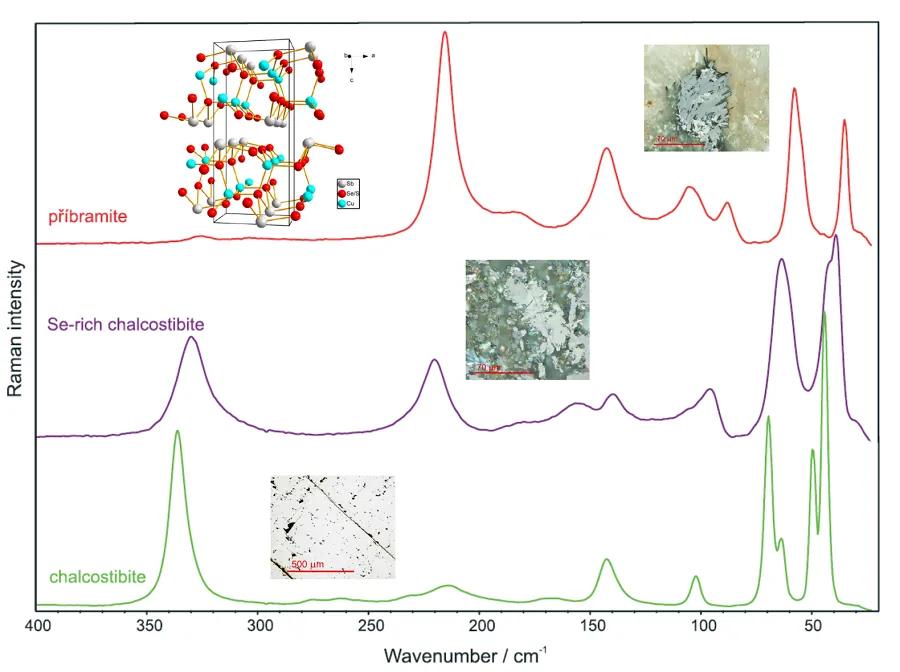Minerals containing selenium are interesting and worthy to study due to its inherent photovoltaic effect. The characterization and understanding of these natural minerals is important to be able to make synthetic analogues. In the paper, several members of the CuSbS2-CuSbSe2 join were studied by micro–Raman spectroscopy:
- příbramite CuSbSe2, which got its name from its bith place, Příbram (Czech Republic)
- chalcostibite CuSbS2 from Dúbrava (Slovak Republic)
- Se-rich chalcostibite
The main internal and external vibrations of these compounds were identified and related to pyramidal Sb(S,Se)3 groups, Cu-(S,Se) bonds and external lattice modes. The příbramite mineral only forms polycrystalline aggregates up to 100 μm in size, therefore it can be studied just by specific techniques. Using micro-Raman spectroscopy it was shown that vibrations of SbSe3 groups, display much higher frequency due to the almost twice mass of selenium compared to sulphur. These results demonstrate the application of Raman spectroscopy for micro-identification of sulphide/selenide minerals and for precise studies of anion isomorphs in different mineral phases.
